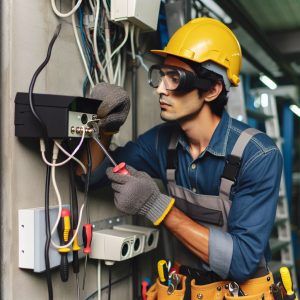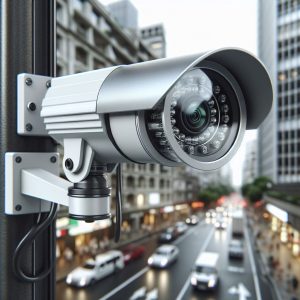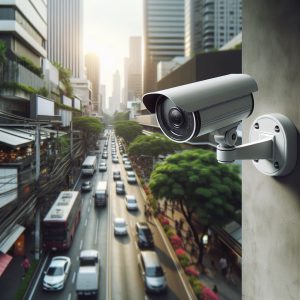Introduction
CCTV (Closed-Circuit Television) systems have become an essential part of modern security infrastructure, providing surveillance and peace of mind for both residential and commercial properties. However, the question often arises: Are CCTV systems complicated to install or upgrade? The answer can vary depending on several factors, including the type of system, the environment, and the user’s technical expertise. This article will explore the complexities involved in installing and upgrading CCTV systems, providing a comprehensive overview of the process.
Understanding CCTV Systems
Before diving into the installation and upgrade processes, it’s important to understand the basic components of a CCTV system. A typical CCTV setup includes:
- Cameras: These capture video footage. They can be analog or digital (IP cameras).
- Digital Video Recorder (DVR) or Network Video Recorder (NVR): These devices store and manage the video footage.
- Cables and Connectors: Used to connect cameras to the DVR/NVR and power sources.
- Monitors: Display the video feed from the cameras.
- Power Supply: Provides power to the cameras and other components.
Installation Process
Planning and Preparation
The first step in installing a CCTV system is thorough planning. This involves:
- Assessing Security Needs: Determine the areas that need surveillance, such as entry points, driveways, and high-traffic areas.
- Choosing the Right Equipment: Decide between wired and wireless cameras, and select the appropriate DVR or NVR based on the number of cameras and storage needs.
- Creating a Layout: Develop a detailed plan showing where each camera will be installed and how the cables will be routed.
Installation Steps
- Mounting the Cameras: Using mounting brackets, attach the cameras to walls or ceilings. Ensure each camera has an unobstructed view of the area it needs to monitor.
- Running the Cables: For wired systems, run Ethernet or coaxial cables from each camera to the DVR/NVR. This may involve drilling holes and using conduits to protect the cables.
- Connecting the Cameras: Connect the cameras to the DVR/NVR and power supply. For wireless systems, connect the cameras to the Wi-Fi network.
- Setting Up the DVR/NVR: Connect the DVR/NVR to a monitor and configure the system settings, such as camera names, recording schedules, and motion detection zones.
- Testing the System: Power up the system and test each camera to ensure it is capturing and displaying video correctly. Adjust camera angles as needed.
Challenges in Installation
While the steps may seem straightforward, several challenges can arise during installation:
- Complex Wiring: Running cables through walls and ceilings can be difficult, especially in older buildings.
- Camera Placement: Ensuring optimal coverage without blind spots requires careful planning and adjustment.
- Technical Configuration: Setting up the DVR/NVR and configuring network settings can be complex for those without technical expertise.
Upgrading a CCTV System
Upgrading a CCTV system involves replacing or adding components to improve performance and functionality. This can include upgrading cameras, increasing storage capacity, or integrating new features.
Reasons for Upgrading
- Enhanced Security: Newer cameras offer better resolution, night vision, and motion detection capabilities.
- Improved Video Quality: Upgrading to HD or 4K cameras provides clearer and more detailed footage.
- Integration with Smart Technology: Modern systems can integrate with smart home devices, allowing remote monitoring and control via smartphones and tablets.
- Increased Storage: Upgrading to larger or cloud-based storage solutions ensures longer recording times and more footage.
Upgrade Process
- Assessing the Current System: Evaluate the existing system’s performance and identify areas for improvement.
- Selecting New Components: Choose new cameras, DVR/NVR, or other components based on the desired upgrades.
- Compatibility Check: Ensure that new components are compatible with the existing system.
- Installation and Configuration: Replace or add new components, and configure the system settings to integrate the upgrades.
- Testing and Optimization: Test the upgraded system to ensure it is functioning correctly and make any necessary adjustments.
Challenges in Upgrading
- Compatibility Issues: Ensuring new components work with the existing system can be challenging.
- Technical Expertise: Upgrading may require more technical knowledge than the initial installation.
- Downtime: Upgrading the system can result in temporary downtime, which needs to be managed carefully.
Conclusion
In conclusion, the complexity of installing or upgrading a CCTV system can vary widely based on the specific requirements and the user’s technical expertise. While DIY installation and upgrades are possible, they can be challenging and may require careful planning and execution. For those who are not comfortable with the technical aspects, professional installation and upgrade services are available and can ensure a smooth and efficient process.
Whether you are installing a new system or upgrading an existing one, understanding the steps involved and the potential challenges can help you make informed decisions and achieve the best possible security for your property.
Secure Your Home and Business with Garrison Alarms!
Experience unmatched safety with Garrison Alarms – your trusted partner in cutting-edge home and business security solutions. With over 35 years of experience, we offer expert installation, state-of-the-art technology, and personalized security strategies tailored to your unique needs.
Our Services Include:
- Home & Business Alarms: Maximize security with our advanced wired and wireless alarm systems.
- CCTV Systems: Protect your property with high-resolution, 4K HD, and color night vision cameras.
- Access Control: Secure your premises with keypad entry, biometric solutions, and more.
- Alarm Monitoring: 24/7 monitoring to ensure your safety and peace of mind.
Why Choose Garrison Alarms?
- Expert & Professional Service: Our licensed technicians provide top-notch installation and support.
- Customer Satisfaction: We prioritize your security and satisfaction with a focus on quality and reliability.
- Affordable Pricing: Get the best security solutions at competitive prices.
Get a FREE Quote Today! Visit Garrison Alarms or call us at 09 520 4875 to learn more and secure your property today!
Garrison Alarms – Your Safety, Our Priority





